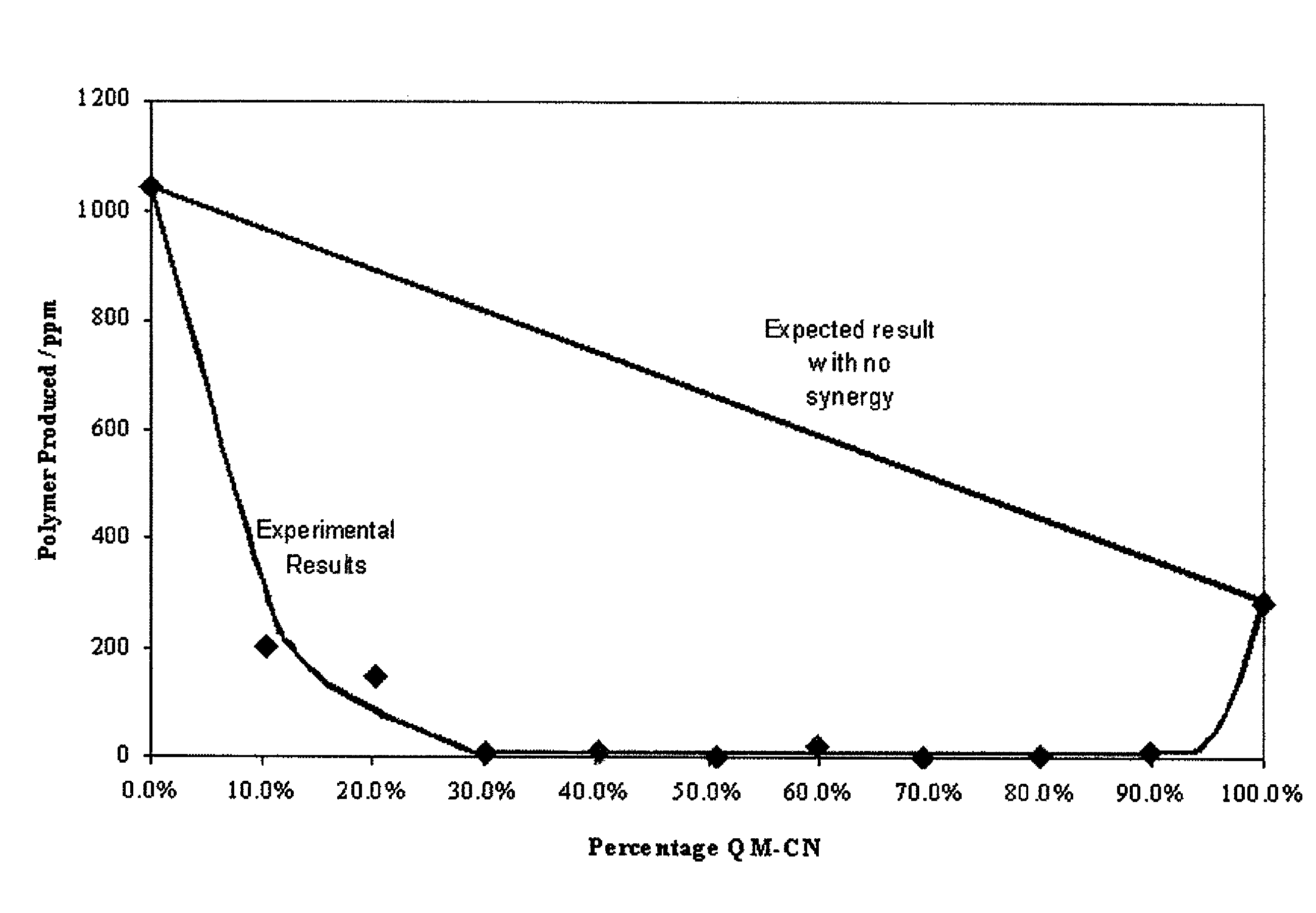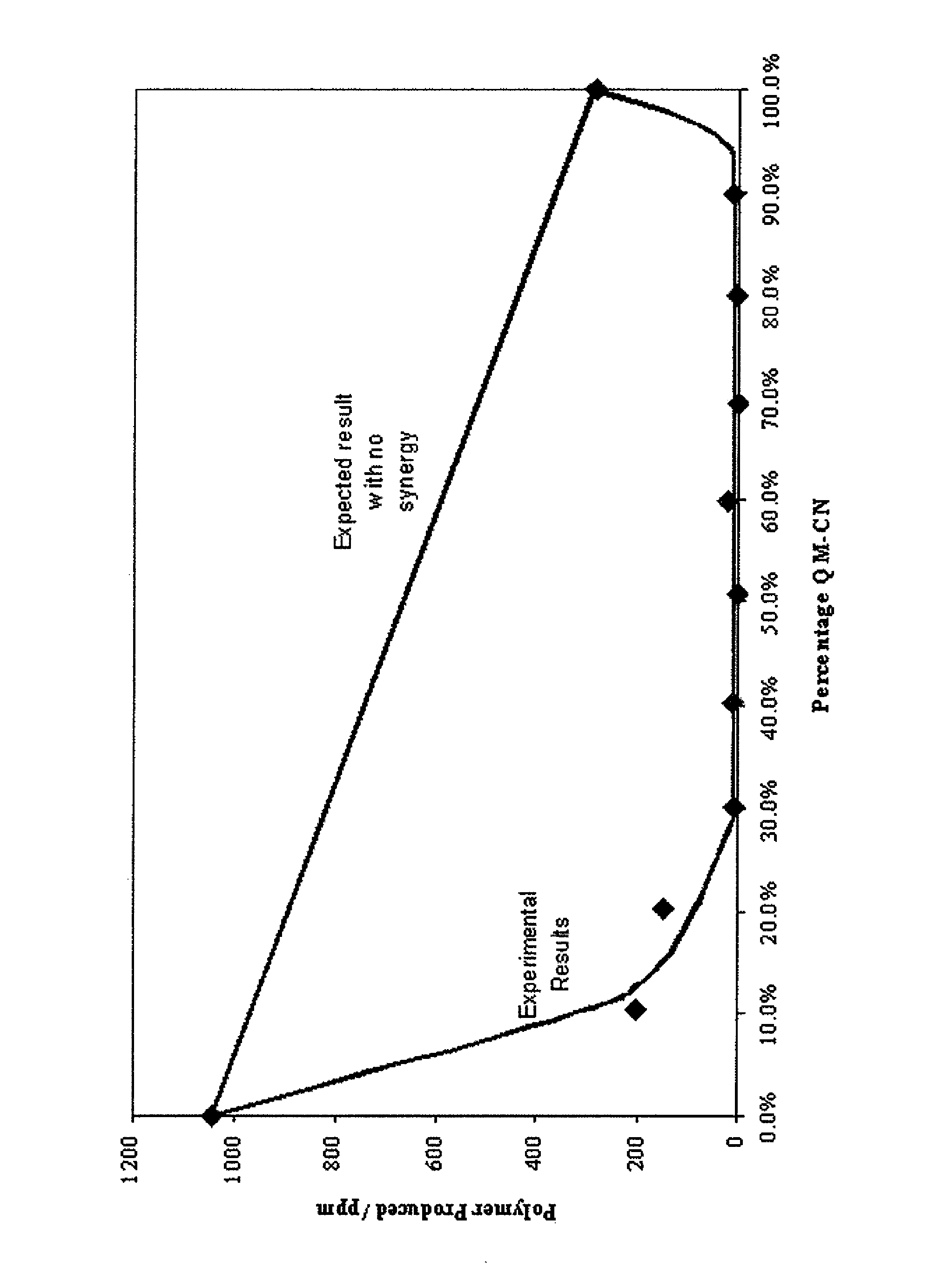Synergistic combination for inhibiting polymerization of vinyl monomers
a vinyl monomer and combination technology, applied in the field of compositions, can solve the problems of undesired polymerization, loss of production efficiency, and particularly problematic undesired polymerization reactions of many of these monomers
- Summary
- Abstract
- Description
- Claims
- Application Information
AI Technical Summary
Benefits of technology
Problems solved by technology
Method used
Image
Examples
example 1
[0053]The uninhibited solution was prepared and tested for unwanted polymer as follows: A solution containing 5.25 g of styrene, 5 ml of n-octane and 6 ml of xylene was prepared in a glass container (Petrotest, Ref. 13-0533). Toluene was then added to the solution up to a total mass of 20.882 g. A glass lid (Petrotest, Ref. 13-0514) was fitted to the container, it was placed inside a closed reaction vessel known as a bomb (Petrotest, Ref. 13-1141) and the lid of the bomb was closed. An 8 bar, high-purity nitrogen supply (containing <10 ppb oxygen) was used to purge the bomb six times. This involved the use of a 3-way valve (Swagelok, Ref. SS-43GXF4) that allowed the bomb to be filled and partially emptied, along with allowing the line to be purged between each fill. The bomb was finally pressurized to 100 psi with nitrogen. The bomb was set to TEST for 30 minutes, which determined if there were any leaks in the system. If the reactor passed this leak test it was placed in a heat bat...
example 2
[0054]The treated solutions were prepared and tested for unwanted polymer according to the procedure in Example 1. As the inhibitors all have different molecular weights, molar concentration was used for this investigation instead of milligrams of inhibitor per 1 kilogram of solution (ppm).
[0055]Initially experiments were carried out with a total inhibitor concentration of 0.145 mM, the equivalent to 25 ppm of HTEMPO. Before any combinations were tested, the quinone methide and quinone diimide were each separately tested at a concentration of 0.145 mM. Thereafter, the performance of different combinations was investigated. The two components were in molar concentrations but the total concentration was kept constant at 0.145 mM. The mole percent of quinone methide relative to the mole percent of quinone diimide ranged from 0:100 to 100:0. Preferably, the mole percent of quinone methide relative to the mole percent of quinone diimide ranged from 10:90 to 90:10; more preferably from 30...
PUM
| Property | Measurement | Unit |
|---|---|---|
| temperature | aaaaa | aaaaa |
| total mass | aaaaa | aaaaa |
| molar concentrations | aaaaa | aaaaa |
Abstract
Description
Claims
Application Information
 Login to View More
Login to View More - R&D
- Intellectual Property
- Life Sciences
- Materials
- Tech Scout
- Unparalleled Data Quality
- Higher Quality Content
- 60% Fewer Hallucinations
Browse by: Latest US Patents, China's latest patents, Technical Efficacy Thesaurus, Application Domain, Technology Topic, Popular Technical Reports.
© 2025 PatSnap. All rights reserved.Legal|Privacy policy|Modern Slavery Act Transparency Statement|Sitemap|About US| Contact US: help@patsnap.com



